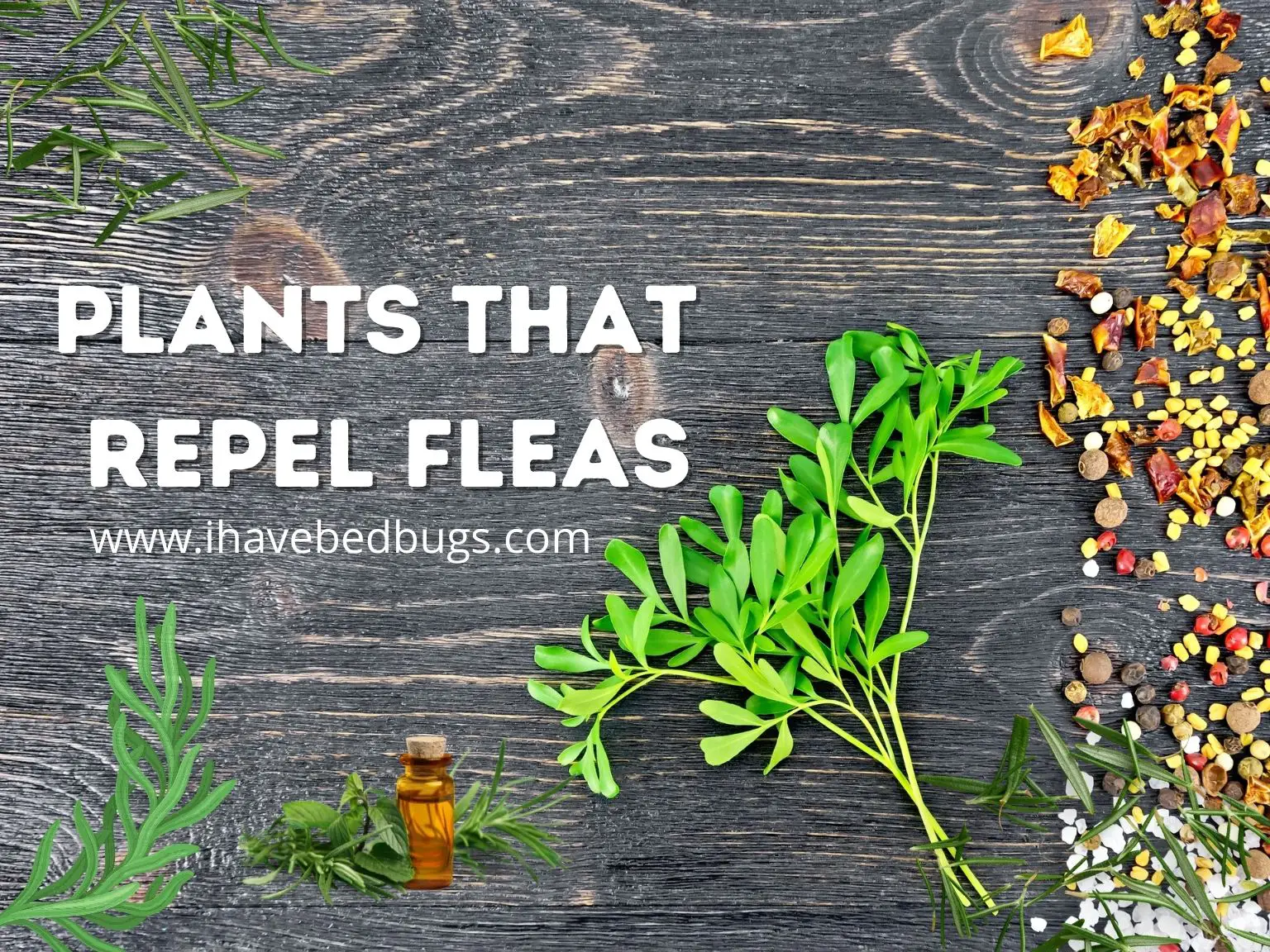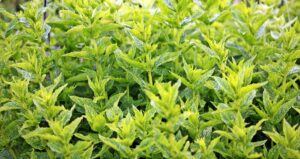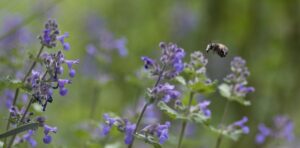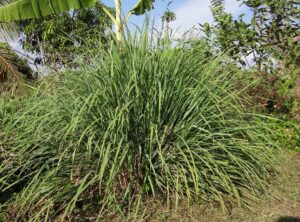Although fleas aren’t typically a concern for people, they are for pet owners. Fleas can make it very difficult for you to have a healthy pet. But flea chewable pills are mostly expensive, so you’ll want less costly and more natural options.
We’re talking about plants that repel fleas; they might even repel ticks and mosquitos. This way, you can take your pet out to play in the garden without worrying about them bringing fleas into your house. So, here’s a rundown of the most effective flea repelling plants.
What Do Fleas Absolutely Hate? 18 Flea Repelling Plants
Numerous plants repel fleas, and we’ll walk you through 18 of the best plants for flea and pest control and other purposes. Also, if you suffer from any allergies, don’t forget to confirm that the plants you have in mind won’t further agitate them.
1. Fleawort
Fleawort is a European flea repelling plant. Fleawort plants, or plantain weeds, are various weed-like herbs, effective at flea repelling.
Moreover, the herb grows low in the ground and resembles lettuce. Its cute flower clusters will remind you of yellow daisies, so they’ll certainly enhance the aesthetic appeal of your garden. Not to mention, you can use the leaves to make tea or salad.
2. Mint
Mint plants are the ultimate flea repelling plants, and that’s the case for about 25 to 30 mint varieties, including orange mint, peppermint, spearmint, and chocolate mint. Their smell is overpowering to insects and bugs but safe for animals. They shouldn’t ingest it, though.
Also, mint plants attract butterflies and other beneficial insects, as they use the mint plant nutrients. Of course, you can use mint in your cooking and enjoy its fresh, strong scent.
And you can plant them indoors or outdoors. If you’re going with the latter, it’d be best to note that mints can grow aggressively fast, so planting them in a pot or using root guards is a suitable method of containing them.
3. Fleabane Daisy
Nothing says flea repellent plant like a plant with the word “fleabane” in its name. In the past, people would carry the plant’s stem in satchels to repel various pests, such as gnats, ticks, flies, and fleas.
It’s unclear if the stems alone are effective, but the plant indeed repels fleas. Thanks to its nectar, fleabane daisy attracts excellent pollinators, including cuckoo bees, beetles, and butterflies.
Also known as pennyroyal, the fleabane daisy is a beautiful plant with cute flower clusters. The plant’s leaves are white, and the center is yellow.
4. Catnip
As you can tell by its name, cats love catnip and its aroma, but fleas hate it. So, this is the plant for cat owners.
To demonstrate, the American Chemical Society states that catnip’s essential oil, nepetalactone, is more effective than DEET (the strong chemical that’s typically used in repellents) by 10 times.
It also contains iridodial, thus drawing in lacewing insects, which feed on mites, aphids, and other plant pests. Moreover, it can protect your vegetable patches or plants against grazers.
As for its recommended conditions, you should grow catnips in adequate sunlight and almost any soil condition. And you can use this perennial plant from the mint family in some unique recipes. You’ll also love its pink or white flowers that grow in late spring!
Tip: Make sure you plant catnips in heavy pots if you have a cat so that it doesn’t knock them over.
5. Rosemary
One of the plants that harmful insects and fleas hate is the rosemary herb (not the rosemary bog or rosemary pea). Manufacturers use rosemary essential oil in many products that repel fleas. They’re safe for pets as well. Rosemary plants also attract butterflies and bees.
In addition, you can use these garden plants to make delicious savory dishes. If you add them to your herb garden, you get to enjoy their pink, purple, white, or blue beautiful flowers. And we can’t forget the plant’s needle-like leaves.
Even better, rosemary is an evergreen plant, so you can enjoy it all year long. Finally, you’ll want to find a sunny spot and well-drained soil so that it can thrive.
Tip: Plant rosemary and sage together for ultimate protection against flea infestation.
6. Sage
Also called Salvia officinalis, sage is one of the flea repelling plants in the mint family and the largest, offering you wide coverage. It can repel fleas and other insects, which can be beneficial in protecting your garden vegetables and herbs that are prone to grazing.
Furthermore, snails, beetles, and deer steer away from the plant. And you can burn sage as an effective method of repelling mosquitoes.
Many sage species, including red sage, S. hydrangea, S. mirzayanii, and S santolinifolia, are used in insecticide control. So, it’s no surprise that sage is one of the most popular flea repelling plants. Not to mention, sage can attract pollinators, such as bees and butterflies.
If you want to grow it, the perennial plant requires loose, well-drained soil to prevent rot. It can live in cool climates too, and you’d do well to place it in a shady spot.
7. Marigolds
With a strong odor, marigolds deter fleas, ticks, white flies, Japanese beetles, cutworms, fruit flies, and other insects from infesting your garden to your plants and pets.
More than that, marigolds are highly versatile. In other words, they can help contain diaper rashes and minimize scar discoloration. The plant can help treat burns, bruises, cuts, swollen bug bites, dermatitis, and eczema.
In addition, marigolds elevate the aesthetics of your garden. Concerning their care, you’ll need to prune the insect-repelling plants if you don’t want them to overtake your garden.
8. Rue
Rue is a herb that repels fleas and insects. Physicians used to prescribe people a mixture of rue and water for repelling fleas in the past. Today, many products, powders, and soaps feature rue for flea-free pets.
The ornamental herb isn’t toxic to cats, but they might dislike its smell. It can, however, damage your liver and result in genetic mutation.
Furthermore, the plant features fern-like leaves. You can grow rues as potted plants or ground shrubs. They’re overall low-maintenance plants, but be careful not to overwater them.
9. Lemongrass
You can plant lemongrass to repel fleas, mosquitoes, flies, and even snakes. Many organic insect repellent candles and sprays use lemongrass plants. Additionally, the plant oil has antifungal, antioxidant, anti-inflammatory features.
Although lemongrass plants aren’t toxic plants to animals, they can give your furry friends a stomachache if they were to eat it.
Lemongrass plants smell great, and they have numerous culinary purposes, especially in the Asian cuisine. After all, they have that lemon-like flavor with a hint of sweetness.
And if you have a spot with full sun, you’re all set to grow lemongrass! The grass grows fast in warmer climates, making it hard to control, which is why you can plant it in a pot.
10. Lavender
Planting lavender can be effective at repelling fleas, moths, mosquitoes, spider mites, beetles, and aphids. That explains why farmers might weave lavender buds into bandanas so that their dogs can wear them outside. There are also bees and butterflies, which love lavender.
Moreover, the perennial plant has bright-colored flowers (purple, pink, or white), beautiful foliage, and a sweet smell that promotes relaxation. Hence, it’s used in some of the most famous essential oils.
Not to mention, you can easily plant and grow lavender; they even tolerate droughts. But remember to prune the flowers on a regular basis and place them in direct sunlight and well-draining soil. That can either be in a pot or a garden.
11. Chamomile
Chamomile can minimize flea activity due to its fragrance, although it isn’t as effective at repelling fleas as some other plants on this list. And you already know about chamomile tea. The plant has a calming effect on people and even plants!
Not to mention, its nutritional value is something that we sincerely appreciate. And the plant’s yellow and white flowers can add to your home’s aesthetic appeal.
12. Chrysanthemum
Chrysanthemums are effective at repelling fleas, thanks to the pyrethrum. They also repel ticks and some pests.
Nonetheless, chrysanthemums may not be safe for cats and dogs because ingesting them can give your pets diarrhea or cause them to vomit. Accordingly, pet owners should block the plant or fence it to protect them.
Aside from its flea repellent properties, chrysanthemum is an ornamental plant. It has the most beautiful flowers that’ll take your flower bed’s aesthetics to the next level.
To illustrate, the plant’s strong smell keeps the fleas away. And if they fail to stop them, its chemical ingredient attacks the insects’ and fleas’ nervous system, rendering them unable to feed and ineffective.
13. Eucalyptus
Eucalyptus repels fleas with a robust aroma that fleas and many pests hate and that people love. In fact, some people hang its waxy leaves in the bathroom to enjoy the sweet smell when they shower. Also, eucalyptus is safe to plant if you have cats or dogs.
However, the plant isn’t only helpful when it comes to keeping the flea population in check, as you can use it to make strong herbal teas.
Also, eucalyptus oil is excellent for skin ulcers, arthritis, and asthma. And this is an ornamental tree, beautifying the streets of cities and people’s yards.
Still, we should warn you against this tree if you live in an area that’s prone to wildfires because it can further agitate them.
14. Sweet Bay
Sweet bay, bay leaves, or bay laurel belongs to the laurel family. Bay leaves repel fleas, flies, mice, and other pests and vermin. Bay leaves can grow large, giving you extensive pest control, but they’re toxic plants to pets.
Otherwise, this species from the laurel family is an essential ingredient in many dishes and is used for seasoning, which is understandable when you consider its aroma.
We should also mention that the female flowers can grow drupes with singular seeds if they’re pollinated. And you can plant sweet bay as a small tree in a big pot.
15. Citronella
You might recognize citronella as one of the plants for mosquitoes control, but you can also use it as a flea repellent, as fleas find its citrus smell overpowering. However, it’s toxic to cats and dogs, so you might want to put it somewhere they can’t reach.
Furthermore, you’ll love the smell that this plant emanates. And, of course, citronella oil has many uses and may be featured in flea repellent sprays. Finally, you’ll be glad to know that citronella does well in pots, meaning you can plant it just about anywhere.
16. Wormwood
Also called mugwort, wormwood is one of the most potent plants to repel fleas. Wormwood cuttings were used in the past to repel fleas, mites, and lice in chickens’ nestling boxes.
Just keep it away from your cat or dog, as its consumption can result in mild toxic effects. As for consuming large amounts of the plant, it can cause convulsions and even death.
With that out of the way, you should know a bit about this ornamental plant. Wormwood has greying green leaves and clusters of pale yellow blooms from summer to fall.
Also, wormwood is an ingredient in absinthe. To demonstrate, the alcoholic drink’s name is inspired by the plant’s scientific name, Epithet absinthium.
The plant is easy to care for and is excellent for self-seeding. Just put it in dry soil that’s fertile and rich in nitrogen, and place the pot in a spot with full sun exposure.
17. Basil
Basil is an excellent plant to repel fleas. That’s because its leaves expel compounds into the air to help prevent a flea infestation. Its oil is even applied to keep fleas, mosquitoes, and other bugs away.
It’s also great for attracting bees and other pollinators because they self-seed readily when they spot it. Luckily, basil is safe for cats and dogs.
In addition, you can use basil leaves in cooking and making tea. Have you tried making pesto with basil? Basil is easy to plant, and you can grow it in your garden or indoors in a pot. If you get sweet basil, you should plant it somewhere with 6 to 8 hours of sunlight every day.
18. Oregano
Oregano, another plant of the mint family, repels fleas and other pests. It isn’t only safe for dogs and cats, but it can also facilitate food digestion.
Additionally, oregano is among many people’s favorite herbs, and we aren’t surprised in the slightest. For one, you can use the plant’s leaves, which have a complex flavor, to make tea. Moreover, the plant’s chemical compounds go into making aromatic oils, which are used for medicinal and dietary purposes.
Tip: If you want to use oregano in the kitchen, you need to prune the shoots regularly, promoting the growth of new leaves.
We’d recommend planting this herb in well-draining soil with full sun exposure and medium moisture levels. But be sure to inspect the plant for spider mites and aphids frequently.
Frequently Asked Questions
Do Lavender Plants Repel Fleas?
Yes, lavender repels fleas and other pests, including flea beetles, spider mites, moths, aphids, and mosquitoes. Farmers would even weave it into dog’s bandanas, keeping fleas at bay.
Do Herbs Repel Fleas?
We can’t say that all of them do, but many of the plants that repel fleas are indeed fragrant herbs. That’s because their potent scents are overpowering, driving the fleas away.
Do Ornamental Trees Repel Fleas?
Some ornamental trees are flea repellants as we’ve mentioned. Examples of them are the eucalyptus ornamental tree and sweet bay evergreens.
What Are the Best Plants for Repelling Fleas?
If you’re asking about the most effective plants at repelling fleas on this list, we’d say the fleabane daisy, catnip, lemongrass, and lavender.
Can Flea Repellent Plants Be Used Indoors?
Yes, you can grow flea repelling plants indoors, in your garden, or both. Planting flea repelling plants in pots at your place is a great preventative measure if the location is prone to flea activity.
Final Words
Overall, growing plants in your garden or house can be highly effective in keeping fleas away. There are 18 plants on this list; all can deter fleas, so you should consider other factors when you choose plants.
For instance, does the climate in your area accommodate them? Can you grow them in pots? How much maintenance do they require? Can they repel many insects other than fleas or other animals? Do they attract pollinators?
If you’re a pet owner, are they toxic to animals? Do they have ornamental, culinary, medicinal, or other purposes? These are all questions you should ask to help you make the right choice.
References:
- https://farmfoodfamily.com/17-plants-repel-fleas/
- https://www.outdoorhappens.com/14-plants-that-repel-fleas-and-how-to-use-them-safe-for-pets/
- https://www.vulcantermite.com/home-pest-control/plants-that-repel-fleas-where-to-put-them/
- https://verminkill.com/
- https://pondinformer.com/plants-that-repel-fleas/
- https://www.fleabites.net/20-plants-that-naturally-repel-fleas-and-other-insects/
- https://thepracticalplanter.com/plants-that-repel-fleas-and-ticks/





